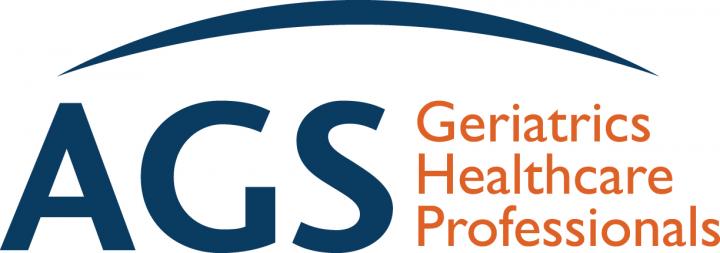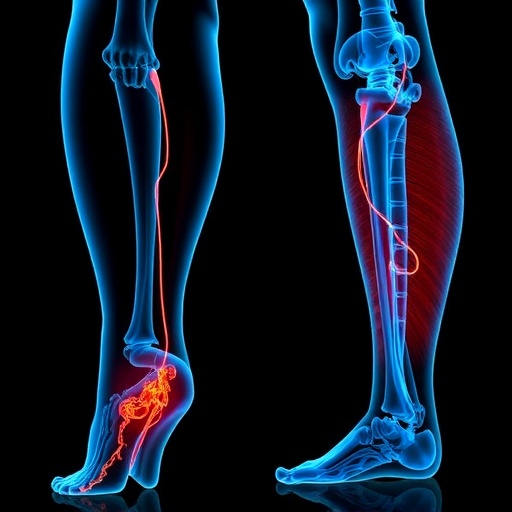
Credit: (C) 2019, American Geriatrics Society
Medical care for older adults has long focused on preventing and treating chronic diseases and the conditions that come with them. But now, geriatrics researchers and clinicians hope a new understanding–one honed at a prestigious conference hosted by the American Geriatrics Society (AGS) and the National Institute on Aging (NIA), with support from The John A. Hartford Foundation–can lead to better and more effective interventions by targeting the aging process itself rather than discrete conditions or concerns.
“Aging is complex and varies from one person to the next, but there’s a growing body of evidence that aging itself is driven by interconnected biological factors we call ‘hallmarks’ or ‘pillars,'” said Christopher Carpenter, MD, MSc, FACEP, FAAEM, AGSF, one of the co-authors of a report on the conference. “We believe disrupting these hallmarks–which cover everything from the stability of our genes to ways our cells communicate–can contribute to chronic disease and frailty, which is why a better understanding of how they work is so important.”
Convened in 2016 as the second conference in a three-part series for recipients of the NIA’s Grants for Early Medical/Surgical Specialists Transition into Aging Research (GEMSSTAR) program, the NIA “U13” conference brought together more than 100 scholars, researchers, leaders representing 19 medical specialties, and NIA representatives to stimulate research across the disciplines involved in high-quality, person-centered care. Conference findings, published in the Journal of the American Geriatrics Society (DOI: 10.1111/jgs.15788), detail how new methods of studying the older-adult population can reveal new tools and accelerate innovative treatments focused on big-picture outcomes important to people’s lives, such as function and independence.
Rather than beginning with the discrete health conditions and concerns common among older adults, conference organizers took the unique approach of focusing on aging itself as a primary factor impacting multiple chronic diseases and the declining ability to rebound from health challenges (also known as “resilience”). In doing so, GEMSSTAR scholars advanced our understanding of the concept that targeting age-related mechanisms might delay, prevent, or even reverse geriatric syndromes, age-related chronic diseases, and declines in resilience. Conference sessions also focused on new methods and strategies for studying these aspects of aging, and reviewed the challenges of studying age when older people often have been excluded from medical research.
Major themes that emerged from the conference include a need for increased attention to:
- * The study of our human population as it ages. Most clinical trials still look for people who are “ideal,” such as people who do not have chronic diseases. However, researchers now understand the importance of ensuring pragmatic clinical trials reflect the full spectrum of health for older adults, particularly those who are frail. These individuals often are the most likely to live with multiple chronic diseases, which can be treated best when we understand how medications and other interventions will affect “real” as opposed to “ideal” people.
* The need for new tools to help older adults and caregivers adapt to changing health needs. Studying the biology of aging could yield even more approaches to aging-related disease prevention or treatment for geriatrics experts who will be needed in greater numbers as the world continues to age. For example, geriatrics health professionals are already adept at streamlining medication management for common conditions such as diabetes and high blood pressure. A better understanding of the interactions of resilience, metabolism, and inflammation with aging, however, could deepen these clinicians’ hypothesis that many common medicines prescribed for these conditions could play a role in supporting general health as we age.
* The importance of accelerating how we translate research into promising clinical practice. Conference workshops also focused on ways to make aging research actionable for clinical studies and clinical practice. For example, suggestions included integrating aging concepts into research conducted by “subspecialists” in particular areas of medicine; creating a national, diverse “geroscience biobank” attuned to exploring multimorbidity and frailty in particular; incorporating “precision medicine” as a catalyst for individualized healthcare delivery; using existing databases like the Baltimore Study of Longitudinal Aging to forge collaborations and inform early-stage hypotheses; and creating a standardized “outcomes toolkit” to help bridge the gap between studies of aging and supports for our well-being as we age.
* Supporting the future of aging research. As more and more people benefit from increased longevity, specialty clinician-investigators–so named for their expertise in caring for patients and researching how that care takes shape–must be empowered to contribute to the evolution of aging research. Collaboration will be particularly important, said Evan Hadley, MD, Director of the Division of Geriatrics and Clinical Gerontology at the NIA, in his closing remarks for the GEMSSTAR U13 conference. Dr. Hadley emphasized that partnering across disciplines previously seen as independent will be important to future progress, which is why the GEMSSTAR community offered such an important outlet for beginning these discussions.
The NIA’s GEMSSTAR program awards support to early-career physicians trained in medical and surgical sub-specialties to conduct transdisciplinary aging research. The AGS serves as a central coordinating body for applicants in particular specialties (anesthesiology, emergency medicine, general surgery, gynecology, orthopaedic surgery, physical medicine and rehabilitation, trauma surgery, urology, and vascular surgery) interested in applying for professional development support, and connects these awardees with their specialty societies. Additional funds support a Professional Development Plan to complement the “R03” research project.
Funding for this conference was provided in part by the National Institutes of Health (grant 5U13AG048721-04) and The John A. Hartford Foundation. The information and views expressed in conference materials and this release do not necessarily reflect those of the NIA and/or the National Institutes of Health.
###
About the American Geriatrics Society
Founded in 1942, the American Geriatrics Society (AGS) is a nationwide, not-for-profit society of geriatrics healthcare professionals that has–for more than 75 years–worked to improve the health, independence, and quality of life of older people. Its nearly 6,000 members include geriatricians, geriatric nurses, social workers, family practitioners, physician assistants, pharmacists, and internists. The Society provides leadership to healthcare professionals, policymakers, and the public by implementing and advocating for programs in patient care, research, professional and public education, and public policy. For more information, visit AmericanGeriatrics.org
Media Contact
Daniel E Trucil
[email protected]
212-822-3589
Original Source
https:/
Related Journal Article
http://dx.




